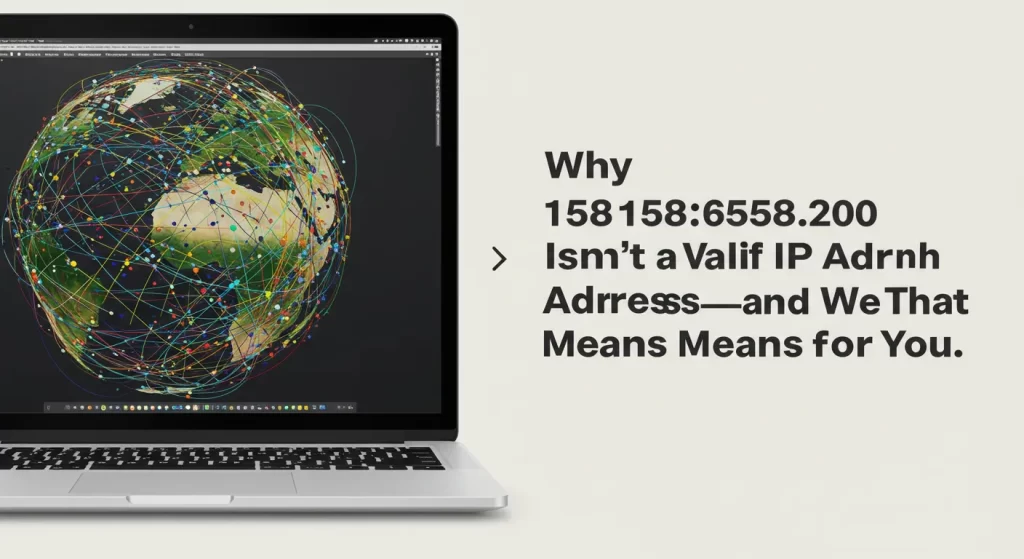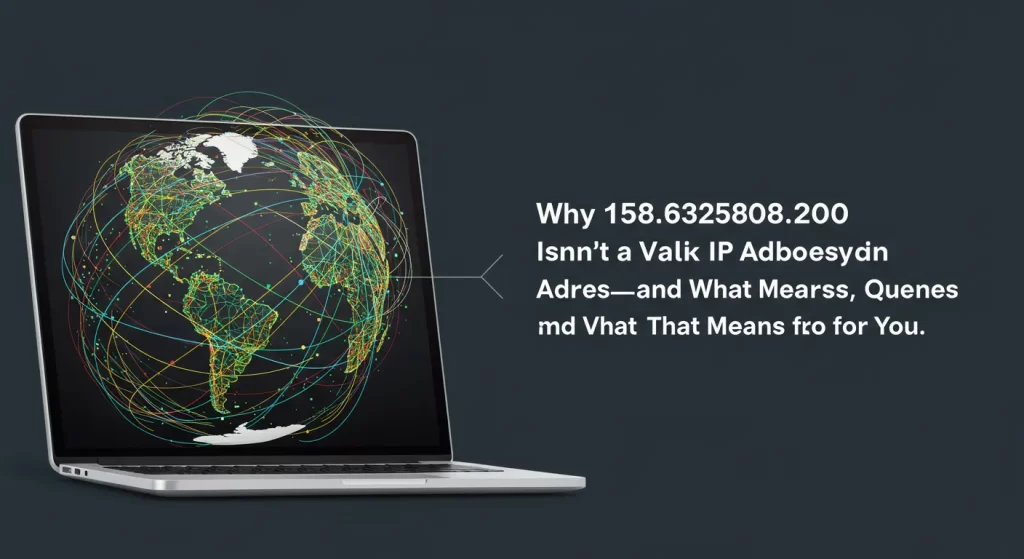Table of Contents
If you’ve stumbled across 158.63.258.200 and are wondering what it represents, you’re not alone. This sequence looks like a typical IPv4 address—but there’s something off about it.
At first glance, it might seem like just another string of numbers, but a deeper look reveals that this is not a valid IP address. Understanding why can help you avoid potential tech pitfalls, enhance your cybersecurity knowledge, and spot red flags online.
How IP Addresses Work
An IP address acts like a digital home address. It’s what computers use to find each other on the Internet. Just as a physical address lets the mail carrier find your house, an IP address tells servers where to send data.
IPv4, the most commonly used type, follows a very specific format: four sets of numbers separated by periods. Each set, known as an “octet,” must be between 0 and 255. That’s a strict rule with no exceptions.
The Octet Rule and Why It Matters
Each segment of an IPv4 address—called an octet—has to stay within that 0–255 range. So when a number like 258 appears, it’s instantly a red flag. In the case of 158.63.258.200, the third octet breaks the rule. No valid IPv4 address can include an octet greater than 255, which means this string doesn’t meet the technical standards required to be recognized on any network.
The Octet Rule and Why It Matters”:
How to Validate an IP Address (Step-by-Step)
Manual Check:
Each part (octet) in an IPv4 address must be between 0 and 255. For example, in158.63.258.200, the third octet (258) is out of range.Command Line (Windows):
textping 158.63.258.200You’ll receive an error: “Ping request could not find host.”
Online Tools:
Use free validators like iplocation.net or WHOIS Lookup.Reference:
See RFC 791 for the official IPv4 specification.
What Happens When You Use an Invalid IP Address

If you enter 158.63.258.200 in your browser or network configuration, the system instantly rejects it because the third octet exceeds the allowed value. You’ll typically see errors like “Invalid IP address” or “Destination unreachable.”
Try it yourself:
On Windows or Mac, open your terminal and type:
textping 158.63.258.200
The command will fail, confirming the address is not routable. In some cases, inputting an invalid IP address could be part of a phishing scam or a misconfiguration. That’s why understanding this helps you avoid falling for internet traps or making networking errors.
Example: Invalid IP in Network Logs

While 158.63.258.200 tries to mimic an IPv4 address, it’s worth noting that there’s also IPv6, which looks very different. IPv6 was introduced because we’re running out of IPv4 addresses. It uses a longer, alphanumeric format. However, even so, the strict rules about how addresses are written still apply, and no legitimate system will accept a malformed IPv4 address like the one in question.
Also Read: How Long Is a Century? Discover the Surprising Truth!
Spotting Red Flags in Network Logs
Tech professionals often review server or router logs to diagnose problems. Seeing 158.63.258.200 in a log might signal a misconfiguration or even an attempt to exploit a system. In network security, precision is everything. Identifying and understanding anomalies like this one helps ensure a safer digital environment.
The SEO Impact of Incorrect IP Usage

If you’re running a website and have a misconfigured IP or an invalid redirect like 158.63.258.200, search engines won’t be able to index your pages properly. That can hurt your visibility and cause trust issues with users. Keeping your backend systems clean and accurate helps your SEO performance and maintains credibility with both users and search engines.
What to Do If You See an Invalid IP
When you come across an invalid IP address, take a moment to verify it. Tools like WHOIS lookup or IP validation sites can quickly tell you if an address is real. Don’t click on suspicious links, and don’t try to access unknown addresses. If you’re running a network or website, make sure your configurations only include valid and authorized addresses.
Final Thoughts
The string 158.63.258.200 may look like a regular IP address, but it’s actually a misfit in the world of IPv4. With the third octet exceeding 255, it simply doesn’t pass the test. Understanding wlps demystify how the internet works and empowers you to recognize problems before they cause real issues. Whether you’re troubleshooting your home network or just trying to avoid online scams, remembering what makes an IP address valid is a small step with big returns.
FAQs
Why is 158.63.258.200 not a valid IP address?
158.63.258.200 is invalid because the third octet, 258, exceeds the allowed range of 0–255 for IPv4. Each section of an IPv4 address must fall between 0 and 255.
What is a valid IPv4 address format?
A valid IPv4 address contains four numeric octets separated by dots. Each number must be between 0 and 255, such as 192.168.0.1 or 10.0.0.1 for private networks.
Can I use 158.63.258.200 in my network?
No, 158.63.258.200 won’t work in any network setup. Since it violates IP formatting rules, your system won’t be able to route or recognize it properly.

